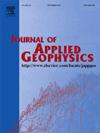Porosity estimation and reservoir favorite zone extraction through pre-stack seismic AVO inversion: A case study of the galhak-oil formation in the Rawat Basin, Sudan
IF 2.2
3区 地球科学
Q2 GEOSCIENCES, MULTIDISCIPLINARY
引用次数: 0
Abstract
The Rawat Basin in southwest Sudan has seen significant progress in identifying and drilling numerous structural traps. However, it is essential to acknowledge that exploration efforts in this region have mainly relied on conventional seismic interpretation techniques, without integrating advanced seismic analysis methods. Unfortunately, this limitation has resulted in many recent drilling attempts yielding disappointing outcomes, with dry wells being the predominant result. Recognizing the urgent need to enhance exploration efficacy, this study breaks new ground by presenting the pioneering application of pre-stack simultaneous inversion in the Rawat Basin. By employing this seismic quantitative interpretation approach for the first time in the region, the study aims to overcome existing limitations and uncover previously unidentified stratigraphic reservoirs, ultimately establishing new drilling targets. We applied an integrated approach that combines geological and geophysical methods to estimate porosity and identify favorable zones for potential hydrocarbon presence in the main reservoir target of the Galhak-Oil Formation. The study performed necessary preprocessing of pre-stack seismic data to enhance signal-to-noise ratio and resolution, as well as the compensating for amplitude losses before their use in seismic inversion. During the amplitude versus offset (AVO) inversion process, we estimated reservoir elastic properties and established a relationship between acoustic impedance, Vp/Vs ratio, and effective porosity values based on well logs. This relationship was then applied to the inverted elastic properties to predict porosity far from well locations. The result is a volume representing the distribution of effective porosity, with high porosity values reaching 0.27, which matched the drilling results. Consequently, multiple sand channels with high porosity were identified. Finally, categorical volumes were created by applying cut-offs based on acoustic impedance, Vp/Vs ratio, and porosity volumes. These categorical volumes were then combined using distinct data ranges, resulting in a unique trace value that represents the favored zones of the target reservoir.
叠前AVO地震反演孔隙度估算及储层优选带提取——以苏丹Rawat盆地galhak-oil地层为例
苏丹西南部的Rawat盆地在识别和钻探大量构造圈闭方面取得了重大进展。然而,必须承认的是,该地区的勘探工作主要依赖于传统的地震解释技术,而没有整合先进的地震分析方法。不幸的是,这种限制导致了最近许多钻井尝试的结果令人失望,干井是主要的结果。认识到提高勘探效率的迫切需要,本研究开创性地提出了叠前同步反演在拉瓦特盆地的应用。通过在该地区首次采用这种地震定量解释方法,该研究旨在克服现有的局限性,发现以前未识别的地层储层,最终建立新的钻井目标。我们采用了地质和地球物理方法相结合的综合方法来估计Galhak-Oil组主要储层目标的孔隙度,并确定了潜在油气存在的有利区域。该研究对叠前地震数据进行了必要的预处理,以提高信噪比和分辨率,并补偿振幅损失,然后将其用于地震反演。在振幅相对偏移量(AVO)反演过程中,我们估计了储层的弹性特性,并根据测井曲线建立了声阻抗、Vp/Vs比和有效孔隙度值之间的关系。然后将该关系应用于反向弹性性质,以预测远离井位的孔隙度。得到了一个代表有效孔隙度分布的体积,孔隙度高值达到0.27,与钻井结果吻合。从而识别出多道高孔隙度砂道。最后,通过应用基于声阻抗、Vp/Vs比和孔隙度体积的截止值来创建分类体积。然后使用不同的数据范围将这些分类体积组合起来,产生一个独特的痕迹值,代表目标储层的有利区域。
本文章由计算机程序翻译,如有差异,请以英文原文为准。
求助全文
约1分钟内获得全文
求助全文
来源期刊

Journal of Applied Geophysics
地学-地球科学综合
CiteScore
3.60
自引率
10.00%
发文量
274
审稿时长
4 months
期刊介绍:
The Journal of Applied Geophysics with its key objective of responding to pertinent and timely needs, places particular emphasis on methodological developments and innovative applications of geophysical techniques for addressing environmental, engineering, and hydrological problems. Related topical research in exploration geophysics and in soil and rock physics is also covered by the Journal of Applied Geophysics.
 求助内容:
求助内容: 应助结果提醒方式:
应助结果提醒方式:


